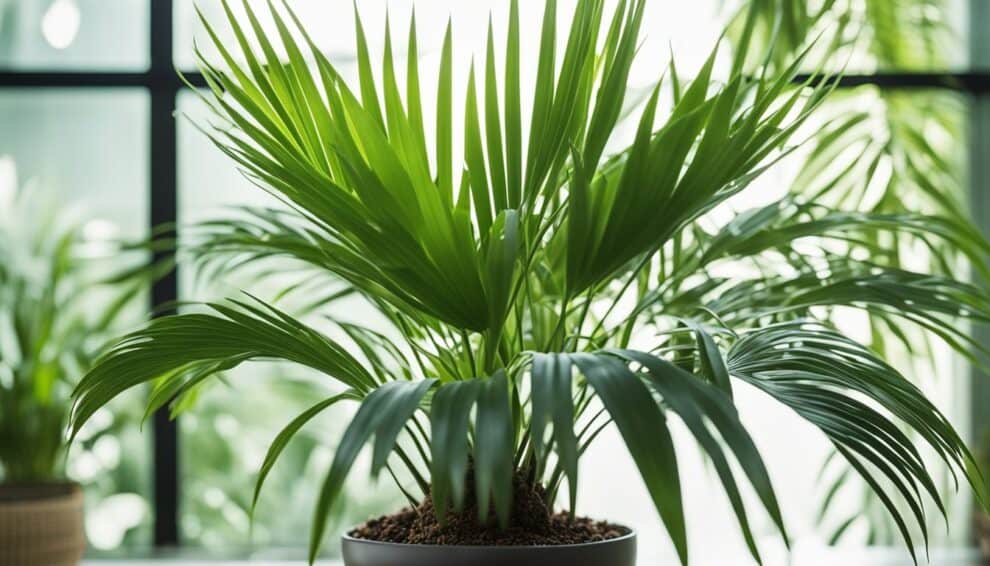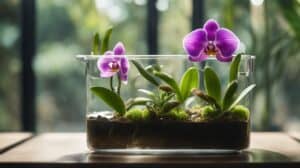Lady Palm (Rhapis excelsa) is a popular indoor plant that is known for its elegant fronds and easy propagation. This plant is native to Southern China and Taiwan, and it is a favorite among gardeners and plant enthusiasts alike. It is a slow-growing plant that can reach up to six feet tall, and it is characterized by its slender stems that are covered with glossy, dark green fronds.

One of the reasons why Lady Palm is so popular is because it is very easy to propagate. This means that you can easily grow new plants from cuttings or by dividing the existing plant. Propagating Lady Palm is a great way to expand your collection of indoor plants without having to spend a lot of money. In addition, propagating Lady Palm is a fun and rewarding activity that can be enjoyed by people of all ages and skill levels.
Understanding Lady Palm
Species Overview
Lady Palm, scientifically known as Rhapis excelsa, is a popular houseplant that belongs to the Arecaceae family. It is native to Southern China and Taiwan and is also known as the Broadleaf Lady Palm. The plant is characterized by its fan-like fronds that grow in a circular pattern, giving it a unique and elegant appearance.
Lady Palm is a slow-growing plant that can reach a height of up to six feet. It is a clumping plant, which means that it grows in clusters of multiple stems. The plant is highly valued for its ornamental value and is often used in landscaping and interior decoration.
Growth Habits
Lady Palm is a low-maintenance plant that can thrive in a wide range of light conditions, from bright indirect light to low light. It prefers well-draining soil and requires moderate watering. Overwatering can lead to root rot, while underwatering can cause the leaves to turn brown and dry.
The plant is also known for its ability to purify the air by removing harmful toxins such as formaldehyde, benzene, and carbon monoxide. This makes it an ideal plant for indoor spaces such as offices, bedrooms, and living rooms.
Lady Palm is a versatile plant that can be propagated easily through division. This involves separating the plant into smaller sections and replanting them in separate pots. With proper care and maintenance, Lady Palm can live for many years and continue to add elegance and beauty to any space.
Propagation Techniques

There are several ways to propagate Lady Palm, including seed propagation, division method, and cuttings approach.
Seed Propagation
Seed propagation is the most common method of propagating Lady Palm. The seeds are small and round, and they can be obtained from mature plants. To propagate Lady Palm from seeds, follow these steps:
- Soak the seeds in water for 24 hours.
- Plant the seeds in a well-draining soil mix, covering them with a thin layer of soil.
- Keep the soil moist but not waterlogged.
- Place the pot in a warm, bright location, but out of direct sunlight.
- Germination usually takes 4-6 weeks.
Division Method
Division is another method of propagating Lady Palm. This method is ideal for plants that have outgrown their containers. To propagate Lady Palm using the division method, follow these steps:
- Remove the plant from its container and gently shake off the soil.
- Use a sharp, sterile knife to divide the plant into sections, ensuring that each section has roots and a few fronds.
- Plant each section in a well-draining soil mix.
- Keep the soil moist but not waterlogged.
- Place the pots in a warm, bright location, but out of direct sunlight.
Cuttings Approach
Cuttings are another way to propagate Lady Palm. This method is ideal for plants that have become too tall or leggy. To propagate Lady Palm using the cuttings approach, follow these steps:
- Cut a stem from the plant, ensuring that it has at least one node.
- Dip the cut end in rooting hormone.
- Plant the cutting in a well-draining soil mix, making sure that the node is covered with soil.
- Keep the soil moist but not waterlogged.
- Place the pot in a warm, bright location, but out of direct sunlight.
- Rooting usually takes 4-6 weeks.
Caring for New Plants

Soil and Potting
When it comes to potting Lady Palm, it is important to choose a well-draining soil mix that is rich in organic matter. A good mix consists of peat moss, perlite, and sand in equal parts. The potting mix should be slightly acidic with a pH range of 5.5 to 6.5.
It is recommended to repot the Lady Palm every two to three years to ensure optimal growth. When repotting, choose a container that is one size larger than the current one, and make sure it has drainage holes.
Watering and Humidity
Lady Palm requires consistent watering to thrive. Water the plant thoroughly and allow the top inch of soil to dry out before watering again. Overwatering can lead to root rot, so it is important to avoid leaving the plant in standing water.
Maintaining humidity levels between 40 to 60 percent is ideal for Lady Palm. Mist the leaves regularly or place a humidifier nearby to keep the air moist.
Light and Temperature
Lady Palm prefers bright, indirect light. Direct sunlight can scorch the leaves and cause damage. If the plant is placed in low light, it may grow slowly and become leggy.
The ideal temperature range for Lady Palm is between 60 to 85°F (15 to 29°C). Temperatures below 50°F (10°C) can damage the plant, so it is important to keep it away from cold drafts.
Fertilization
Fertilize Lady Palm every two months during the growing season using a balanced, water-soluble fertilizer. Avoid overfertilizing, as it can cause salt buildup in the soil and damage the roots.
By following these care tips, new Lady Palm plants can thrive and grow into elegant fronds that will add beauty to any indoor space.
Frequently Asked Questions

How can I propagate a Lady Palm plant at home?
Propagating a Lady Palm can be done by division. The best time to do this is in spring when the plant is actively growing. Carefully remove the plant from its container and gently separate the rhizomes. Make sure each division has a healthy root system and at least one stem. Plant the divisions in separate containers with well-draining soil and keep them in a warm, humid environment until new growth appears.
What type of soil is best for growing Rhapis excelsa?
Lady Palms prefer a well-draining soil that is rich in organic matter. A good mix would include peat moss, perlite, and sand. Make sure the soil pH is between 6.0 and 7.5.
How often should I water my Lady Palm for optimal growth?
Lady Palms prefer evenly moist soil, but not waterlogged. Water the plant when the top inch of soil feels dry to the touch. Avoid letting the soil completely dry out or sitting in standing water.
Can I propagate Lady Palm from seed, and if so, how?
Yes, Lady Palms can be propagated from seed. Soak the seeds in warm water for 24 hours before planting them in a well-draining soil mix. Keep the soil moist and warm until germination occurs, which can take several weeks.
What are the ideal lighting conditions for a Lady Palm indoors?
Lady Palms prefer bright, indirect light. They can also tolerate lower light levels, but growth may be slower. Avoid direct sunlight, as it can scorch the leaves.
How do I know when it’s time to repot my Lady Palm?
Lady Palms prefer to be slightly root-bound, so only repot when the plant has outgrown its container. Signs that it’s time to repot include roots growing out of the drainage holes, the plant becoming top-heavy, or the soil drying out too quickly. Repot into a container one size larger with fresh potting soil.













